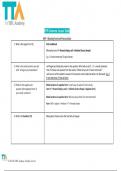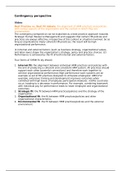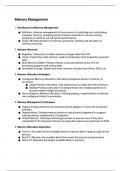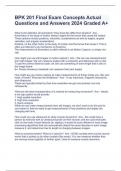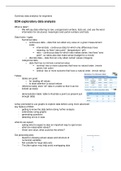● (1:2) means a vector.
● or (x=1:3) means x has the values 1 to 3
● We can plot with plot(x=1:3, foo(1:3)) for example.
● With help(“ “) you can search documentation for certain functions and functionalities.
● With type=”l” you get a line in the plot.
● main=”...” enables to give a title to the plot.
● xlab and ylab enables us to specify labels on the y and x axis.
● rnorm(10) givus us 10 random numbers for a normal distribution.
○ To keep the same values instead of having everytime new ones, use
set.seed()
● t-tests we do with t.test()
● par(mfrow=c(2,2)) means we have 2 plots next to each other plotted, which is handy
for comparing things.
Video 3, statistics and critical thinking
What is statistics?
● Statistics is the science of data:
○ The study of collecting, organising, analysing, interpreting and presenting
data.
● We use statistics to gain information about a group of objects (population) and/or to
make decisions and predictions.
●
○ We collect data from the population.
○ When you collect data from the whole population that’s called a census.
■ But you want a subset, not everything.
, ■
● We draw conclusions from the sample.
● The sample has to be a representation of the population.
● A statistical study has 3 parts:
○ Prepare
■ context
■ Source
■ Sampling method
○ Analyse
■ Graph data
■ Explore data
■ Apply statistical methods
○ Conclude
● Doing statistics requires critical thinking.
○
○ Common flaw is having a bad sampling method.
■ You should choose a method such that the sample from the population
represents the population.
■ Sample is a subcollection of a population, so different samples →
different data.
● Hence possibly different conclusions about population.
■ A sample should be representative (same characteristics as
population) and unbiased (no systematic difference with population).
● Then we should have the same data as we would have used
the whole population.
○ Another flaw:
, ■
■ The difference here seems quite large, but that’s because the y-axis
does not begin at 0.
○ Another flaw:
■ Correlation does not imply causation.
■ Other variables can influence a correlation.
Video 4, statistics and critical thinking
Collecting sample data
● Voluntary response sample:
○ Subjects decide themselves to be included in sample.
○ But is biased, because only people who feel like it answer.
● Random sample:
○ Each member of population has equal probability of being selected.
○ Is unbiased and gives a better representation of the population.
● Simple random sample:
○ Each sample of size n has equal probability of being chosen.
○ Is unbiased
○ But hard to do in practice when you for example have a very large population.
● Systematic sampling:
○ After starting point, select every k-th member.
○ It is easy to manipulate the outcome.
■ This makes it dangerous because outcomes can be influenced.
● Stratified sampling:
○ Divide population into subgroups such that subject within groups have same
characteristics, then draw a (simple) random sample from each group.
● Cluster sampling:
○ Divide population into clusters, then randomly select some of the clusters.
○ May lead to biased data which not represents the data.
■ To decrease the risk it is important to have a large dataset.
● Convenience sampling:
○ Easily available results
○ For example family
Part 2, important concepts:
● Variable:
, ○ Varying quantity
● In cause and effect studies:
○ Response (dependent) variable:
■ Representing the effect to study
○ Explanatory (independent) variable:
■ Possibly causing that effect
○ Confounding:
■ Mixing influence of several explanatory variables on response.
○
■ It is very important to investigate the significance of the confounding
variables.
Video 5, types of data
Part 2 different types of study:
● Observational study:
○ Characteristics of subjects are observed; subjects are not modified.
○ Retrospective (case-control): data from past
○ Cross-sectional: data from one point in time.
○ Prospective (longitudinal): data are to be collected.
● Experiment: some subject treatment
○ Sometimes control and treatment group: single-blind or double blind,
○ To measure placebo effect or experimenter effect.
Types of data
● Parameter:
○ Numerical measurement describing a population’s characteristic.
○ Notation: typically Greek symbols.
● Statistic:
○ numerical measurement describing a sample’s characteristic.
○ Notation: small letters like x and s.

